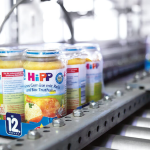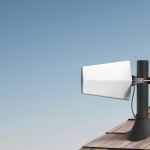Introduction
In today’s digital landscape, where competition is fierce and user attention spans are fleeting, crafting SEO content that captivates can be a game-changer for any online presence. It’s not just about incorporating keywords; it’s about weaving a narrative that resonates with readers while signaling value to search engines. Whether diving into the nuances of local SEO strategies or seeking insights from industry experts like Firestarter Denver, understanding how to create compelling content can increase visibility and conversions.
This guide will disclose strategies for producing content that not only captures attention but also maintains it. This results in enhanced search engine rankings and improved engagement metrics. By mastering these techniques, you can turn casual browsers into dedicated followers.
The Foundation of Engaging SEO Content
The core of SEO content is established on two fundamental principles: engagement and optimization. Content that captivates the audience piques their interest and motivates them to explore the subject matter further. It involves storytelling, a strategy that humanizes brands and creates connections with readers. At the same time, SEO optimization ensures that this engaging content is seen by those who seek it. Balancing these elements involves understanding the core principles of SEO while tapping into creative content strategies.
Understanding Your Audience
To create content that truly resonates, it’s paramount to understand your audience. Who are they? What problems are they trying to solve, and how can your content provide the answers they seek? Delving into audience demographics and creating detailed buyer personas can provide clarity. Tools like Google Analytics offer invaluable insights into user behavior, helping content creators tailor their approach. The better you understand your audience, the more effectively you can communicate with them.
Keyword Research Demystified
Keyword research is essential for establishing a successful SEO strategy; nonetheless, it often presents difficulties for many individuals. The process starts with brainstorming potential topics related to your audience’s needs. Employing resources such as Google Keyword Planner or SEMrush can assist in identifying the search terms and phrases utilized by your target audience. It is essential to incorporate these keywords organically within your content, ensuring it is optimized for search engines while maintaining the readability of the text. The integration of keywords should be smooth, allowing the content to remain captivating and beneficial to the reader.
Creating Compelling Headlines
First impressions count, and your headline is the first contact point in digital content. A headline should pique interest and promise value, compelling the reader to click and explore further. Techniques such as using numbers, addressing the reader directly, and showcasing the key benefits can enhance a headline’s effectiveness. Testing different versions can reveal what resonates with your target audience the most. An impactful headline is a catalyst for higher click-through rates and can significantly influence the overall success of your content.
Building Content Structure
A well-structured article is like a well-laid road, guiding readers smoothly from start to finish. Clear headings, subheadings, bullet points, and numbered lists enhance the content’s readability and SEO. This structure allows search engines to better understand the information’s hierarchy and importance, improving the content’s ranking potential. Moreover, intuitive navigation enhances reader engagement, minimizes bounce rates, and extends the duration of time spent on a page, all of which are favorable indicators for search engine optimization.
The Role of Multimedia in SEO
Multimedia elements infuse content with vibrancy, often making complex ideas easier to understand. Images, videos, and infographics add a visual dimension that can enhance user engagement. However, these elements must be optimized for SEO. This includes using descriptive file names, adding alt text to images, and ensuring videos are hosted on optimizing search platforms. Multimedia can hold the reader’s attention longer, providing an immersive experience that transforms a standard article into a comprehensive resource.
Measuring Content Success
Developing content represents only a portion of the overall effort; evaluating its effectiveness is equally important. Key performance indicators (KPIs), including page views, average duration of page engagement, and conversion rates, offer significant insights into the effectiveness of your content. By understanding successful elements and those that require adjustment, you can enhance your strategies for future content, thereby promoting ongoing improvement and significant success.
Refining and Updating Content Regularly
Content creation is not merely a singular endeavor but a continuous process. Consistently reviewing and refreshing your content guarantees its relevance and precision. This dedication to maintaining up-to-date information conveys to your audience and search engines that your content is reliable and current. Simple updates can include integrating new data, refreshing old information, or reformatting for clarity. By keeping your content in top shape, you maintain its value and optimize its potential for continued success.
Lynn Martelli is an editor at Readability. She received her MFA in Creative Writing from Antioch University and has worked as an editor for over 10 years. Lynn has edited a wide variety of books, including fiction, non-fiction, memoirs, and more. In her free time, Lynn enjoys reading, writing, and spending time with her family and friends.















